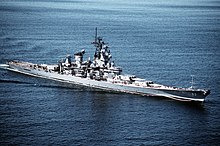

A fast battleship was a battleship which in concept emphasised speed without undue compromise of either armor or armament. Most of the early World War I-era dreadnought battleships were typically built with low design speeds, so the term "fast battleship" is applied to a design which is considerably faster. The extra speed of a fast battleship was normally required to allow the vessel to carry out additional roles besides taking part in the line of battle, such as escorting aircraft carriers.

A fast battleship was distinguished from a battlecruiser in that it would have been expected to be able to engage hostile battleships in sustained combat on at least equal terms. The requirement to deliver increased speed without compromising fighting ability or protection was the principal challenge of fast battleship design. While increasing length-to-beam ratio was the most direct method of attaining a higher speed, this meant a bigger ship that was considerably more costly and/or could exceed the naval treaty tonnage limits (where these applied, such as the Washington Naval Treaty shaping naval fleet composition after World War I). Technological advancements such as propulsion improvements and light, high-strength armor plating were required in order to make fast battleships feasible.
Unlike battlecruiser, which became official Royal Navy usage in 1911,[1] the term fast battleship was essentially an informal one. The warships of the Queen Elizabeth class were collectively termed the Fast Division when operating with the Grand Fleet. Otherwise, fast battleships were not distinguished from conventional battleships in official documentation; nor were they recognised as a distinctive category in contemporary ship lists or treaties. There is no separate code for fast battleships in the U.S. Navy's hull classification system, all battleships, fast or slow, being rated as "BB".
- ^ Admiralty Weekly Order no. 351, 24 November 1911; quoted in Roberts (2003), p. 24